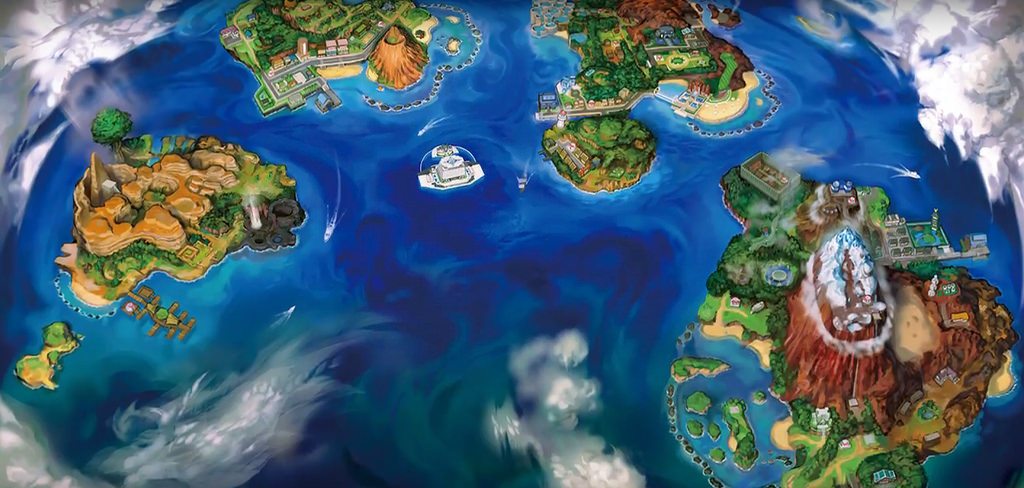Pokémon Sun and Moon light the way for the future
My Decidueye, the final evolution of my Grass/Flying starter, cannot learn Fly. Decidueye is literally an owl, and can learn lots of other Flying-type moves, but for some reason not the definitive Flying-type move. This is extremely irritating, but it bodes very well for Pokémon Sun and Moon that this is my biggest problem with the game.
20 years on from the first games, it seems somewhat redundant to attempt to explain Pokémon. In terms of gameplay, very little has changed – as always, your aim is to collect and battle Pokémon while exploring a stylised world and working through a simple story. Different generations come with different side-quests and mini-games, and Generation 7 is no exception, but the base game is everything we’ve come to know and love over the years.
But that’s not to say that nothing has changed, as Sun and Moon provides the biggest departure from the series’ normal format in its history. Instead of battling your way through eight elemental gyms on your way to becoming the very best, Sun and Moon use the culture of their Hawaiian-inspired setting, Alola, to introduce Island Trials. Instead of Gyms and Gym Leaders, Trials offer challenges and puzzles unique to each type, and then pit your team against a ‘Totem Pokémon’ – a buffed-up, type-specific opponent who are little more than minor obstacles in the game’s early stages, but offer a significant challenge later on.

Decidueye clearly shown flying. What the hell, Game Freak. Image Caption: Bulbagarden.
Other major changes come in the form of Z-Powers, which are Generation 7’s answer to Mega-Evolution. Z-Crystals are also type specific, and are usually won by defeating a Totem Pokémon. They ‘attach’ themselves to moves of the same type, and, once per battle, allow you to unleash an extremely powerful Z-Move. While they’re a lot of fun to use, they do feel slightly limited, especially since you can only utilise one Z-Move a battle, even if several of your party Pokémonare holding them, and I missed using Mega-Evolution in more tense battles.
Arguably the best set of changes Sun and Moon bring to the series comes from a sense that the whole game has been streamlined. The provision of a real-time map, a Poké Ball hotkey and the removal of HMs all speed up game time, letting you spend more time battling and training. The biggest impact, however, comes from the decision to let the player access information on type match-ups during battles. Defeat a species of Pokémon once, and the effectiveness of your team’s moves against it will be stored for the rest of the game. It’s the kind of change that had potential to draw criticism for dumbing down the series (Sun is one of the easiest Pokémon games I’ve played, with only X offering me less of a challenge), but given that this information is all readily available online, it’s a simple timesaver that means you’re not required to know the types and match-ups of every one of more than 800 Pokemon.
Despite the huge variety of Pokémon that are in theory available, I found that they tended to be either unattainable until it was so late in the game they didn’t matter, or out-shone by older favourites. For most of the game, my team was made up of my starter Pokémon , and a smattering of favourites from previous games that the early game had gifted me – Arcanine, Lanturn and Hariyama battling alongside their lone Generation 7 companion. New Pokémon, while maintaining a sense of intrigue and power, tend to feel irrelevant at the points where you would actually go out of your way to catch them, and as a result I was rarely interested in them.

Constant island-hopping can leave the cute faces of these new Pokémon fuzzy in your mind. Image Credit: Bulbagarden.
Pokemon Sun and Moon provide the best new Pokémon game in years (Generation 6’s Omega Ruby and Alpha Sapphire are my personal favourites, but are also remakes of earlier games). After struggling to merge the story-telling, challenge and craftsmanship of the early games with the increased marketability of the DS family of consoles, Generation 7 goes a long way towards meeting the demands of seasoned veterans while remaining relevant to new adventurers. Its difficulty curve is off, providing an at-times boring early game followed by a much more difficult late-game, but its story is one of the best in the series, and the Alola region has a lot to offer.

Comments